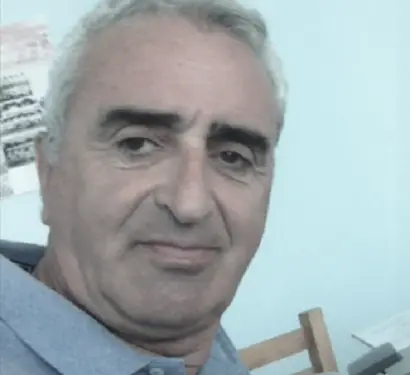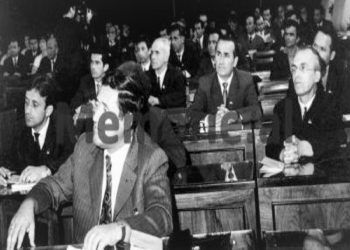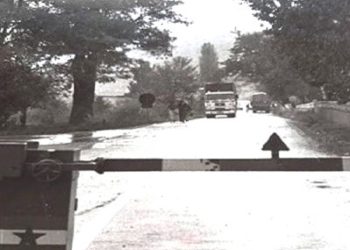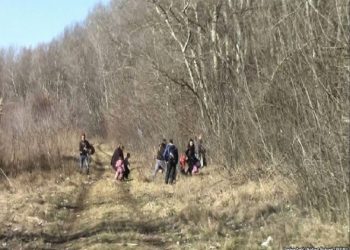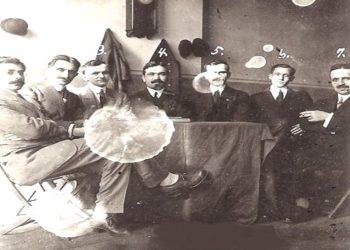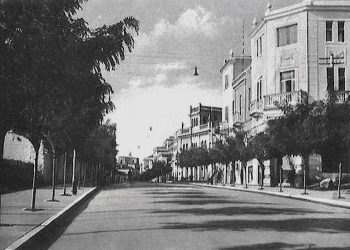From Uvil Zajmi
Memorie.al / It was known as the “School of Vagabonds”, although most of the time it was not related to vagabondism. It was officially called the school or the “Re-Education Colony” and has been operating for several decades in Tirana, as an educational environment, only for children with social problems. But how did the idea come about, who were the ones who built it, ran it, and what was the contingent of children? From Gramshi, the transfer to Yzberisht in Tirana, following an order of Prime Minister Mehmet Shehu, and the children’s march on foot. As Ivan Koli, one of the well-known leaders of this institution, remembers today, since the creation and closure of that school, which dealt only with orphaned, abandoned and delinquent children.
The initial step in Yrshek, then in Gramsh
Homes for children’s education have been operating for years in many countries, such as those of the Socialist Camp, led by the former Soviet Union, also in Europe with: Italy, France, England, and even the United States of America. All based on laws and well detailed programs.
Such a system, for sheltering orphaned and abandoned children, also existed in Albania, during the period of fascist occupation, but which was under Italian influence. The first attempt to open a school or “Education Center for Children with social problems” was designed in 1952, for Yrshek, near Tirana, but it failed very quickly, not yet starting to function, although a contingent of 60 was gathered -70 children and adults, up to 20 years old, who were accused of robbery, etc.
The second attempt came in 1957, when the “Children’s Education Colony” was established, a few kilometers from Gramsci, a city isolated and without much communication with the rest of Albania. Initially, there were no real criteria, even in the first groups of children, there were not only minors, but also adults.
About 100 of them were placed in some silos of abandoned former military units, while initially, they were quarantined, where they stayed for a few days to then join the group. A regulation was drawn up, while a general call was made for the recruitment of cadres to serve in this Colony.
Enrik Çoba, the first director
The first director of this school was Enrik Çoba, a very correct, serious and dedicated Shkodran gentleman, who took on the task of setting up the first School or Education Colony. Along with him, some cadres also arrived, such as: Stefan Mihali, (Albanian language teacher), Myftar Marku, the physical education educator, while some soldiers were also taken, to perform military service, guarding the building, even sleeping there and were treated. To gain experience, Enrik Çoba was sent to Russia, for a 3-month period, to see “Makarenko’s Colonies” up close. Çoba, remained director until 1966, to be replaced by Ceno Doracaj.
“MAKARENKO” model?
Anton Makarenko, Ukrainian, pedagogue, psychologist, educator, close friend of Lenin, was the first to apply the “collective” theory of child treatment. Immediately after the “October Socialist Revolution” and the First World War, in 1917, it was dedicated to the children of minors abandoned, orphaned by the war, thieves, criminals and without families.
He founded the first work colony “Gorki Colony”, where he began experimenting as an educator, a very well-known and efficient Soviet model for later times, based on Makarenko’s concept, for helping and integrating hopeless children into society. He died suddenly in Moscow, in 1939, when he was 51 years old, but the system he built is known as: “Makarenko Colonies”. Such was the idea that the Albanian state designed and that worked for several decades. Years later, a former student of “Makarenko Colony”, now in the role of its director, came to see the Tirana school up close.
The visit of Mehmet Shehu, the transfer comes
Until 1960, the School of Re-education remained in Gramsh. Precisely at the end of this year, Prime Minister Mehmet Shehu goes to Gramsh and visits the “Colony”. Surprised by the order, operation, cleanliness, discipline, he invites the director to show him the way of organization. Using the opportunity and the enthusiastic situation of Mehmet Shehu, with intuition, Çoba proposes, asking Shehu to transfer the school to a city that would be closer to active and social life, since Gramshi was completely isolated. Before long, the order to transfer to Yzberisht of Tirana comes.
March on foot towards Tirana
Equipped with the spoils of the body on their backs, after a long march, students and educators traveled on foot for three days along the highway from Gramshi to the capital, often sleeping on the way. The one-story building designated for this purpose was ready in Yzberisht, a village on the outskirts of Tirana, to its west, only 6-7 km from Tirana and very close to the “Stalin” Textile Factory. With other conditions and opportunities, quite different from that of Gramsci, another stage begins, already different for the Reeducation Colony.
The first contingent with children
In Yzberisht, together with the contingent from Gramshi, a group of about 100 children was created, from all over Albania, pickpockets, orphans abandoned by their families, out-of-control hooligans, those who had dropped out of school, from families with many children etc. They came naked, confused, not knowing that several years of isolation would serve to avoid a path or opportunity that would lead them to guilt or serious crimes. In the following, their number increased to 200, while the inclusion of girls was prohibited in the School of Re-Education.
How did the colony work?
The “Reeducation Colony” aimed to educate children, between work and school, even the latter was in the foreground. With the idea of operating as a semi-open school and not completely isolated, children were given the opportunity to learn trades, such as: carpenter, turner, adjuster, bricklayer, etc., for those who had a seven-year education and in school and work, those who they were illiterate. Everything within that environment, starting from the hygienic and sanitary conditions, bedrooms, classrooms for learning and study, library, canteen, kitchen, cinema club, office for teaching and production work, etc., and the whole institution, depended on the Ministry of the Interior… The building was guarded by several guards, soldiers and a few policemen, who served there in the smooth running and security of the Colony. In those early days, there were cases when children would run away, as they could not stand the rules or discipline, but the police would catch them and bring them back.
Enrik’s ideal find
For several years, the school suffered from a lack of trained personnel, since until those years, the recruitment of staff was difficult, because the school was not preferred as a workplace and as educators, there were people without a professional level. In 1964, Enriku, seeing this lack, was informed that there was a contingent of teachers appointed in different cities of the country, who had requested to return to Tirana, near their families.
He proposes his idea to the Ministry of the Interior to employ these teachers in the School of Re-education. First, he met and talked with them, whether or not they agreed to dress as officers and work as educators in this school with a specific profile. For those teachers who had families in Tirana and did not need to settle down with a house, it was a great advantage. Specialists prepared for teaching and production are approached, and with them also 5-6 background staff. Not forgetting Fatima, the iconic cook of this colony.
1969, unmotivated closure
In 1969, already organized and when everything was working, suddenly came the order to close it down. No convincing motive was given, except for some anemic reason, such as: “Albania is a socialist country and there is no need for such schools”. Even the proposal that it become an 11-year-old boarding school, professional, with boys and girls who would come from other cities for education, integrating the newcomers with the contingent within the school, to create a different atmosphere in treatment and communication among children, it was not approved.
One reason could also be the fact that: the soldiers engaged there, complained continuously, because they went there at 1:00 PM and stayed until 9:00 PM, cutting themselves off from family and society. They had the privilege only on Saturdays and Sundays to stay with their families. After the closing of the school, the freed children returned to their families, or were dispersed sporadically, being organized in dormitories, cities and other places, and there came the Agricultural School.
Year 1973, reopening at the same location
In 1973, the school reopened in the same location and building. It was no longer Enrik Çoba, the famous director, but Jani Papandile, another well-known intellectual. In that restart, the contingent was small, about 40-50 students, but within a short time, it grew to 200 children, who were distributed and organized into 8 brigades and companies, with 20-25 children each.
Now, only children from 10-15 years old were accepted, no longer older. Along with the reopening of the school, the contingent of cadres who had served years ago in that Colony also returned. Even the name remained the same, that is, the “School of Re-education”, which was popularly known as the “School of Vagabonds”.
Special educational program from the Ministry
The family situations where the children came from were well known. They were mostly affected by divorces, imprisonment of parents, violence, runaway parents, train pickpockets, etc. The isolation of the child was based on state laws and the proposals came from the village, the police, the neighborhood, the school, the Front, which accompanied them with arguments, the motive why the child should be sent to the Reeducation School, as well as his family conditions. In the District Executive Committee, there was a committee that decided which children should go to this center. The head of the commission prepared the file and after receiving the majority of votes, sent them to the “Education Colony” in July or August, at the beginning of the educational year.
The period of stay was from 1-3 years. The children were forced to get their hair cut by the barber who came from Tirana, and they woke up at 05:30 or 06:00 and they ran to Ura e Beshir and back. After arranging the dormitories, in the morning, at 08:00, the lesson began for those who continued school and work in the office, for those who had trades. The school program was special and approved by the Minister of Education, three days of school and three days of work. In the afternoon, the children engaged in sports activities that took place within the school’s territory, spread over several hectares. Even during the summer, on the banks of the Erzen river, long stays with children’s tents were organized, where they worked and bathed.
Manufacturing work, Famous Billiards
Very important and quite efficient, was the organization and products of the school, during the productive work of the children. With good conditions and modern machinery, provided by the school, in addition to the craft that the children learned there, their products were preferred for quality and were mainly made and used by military units under the Ministry of the Interior. But the things that were most wanted were the billiards made in this school. They were sent to homes and centers of culture, ministry environments, etc. It was not only stones that came from abroad that were produced.
Life inside the walls, “Isolation room”
In the school setting, there was a grocery store, and in order to stimulate the children’s awareness, they were obliged, after buying something, to throw the money worth the value of the item they bought into a box located inside the store. Meanwhile, for good work and behavior, the educator took a small amount of money from the finance department, 10 or 20 lek, and gave it to the children to spend, when they went out freely. The “Isolation Room” also functioned, or otherwise: “Work School”.
Children who didn’t behave well, stole or fought, at the suggestion of the educator and by order of the director, were locked up in the “School of Work”, a small environment, outside the enclosure. There was a policeman standing there dealing with them. Children did not have the right to go to work and school in the morning, while they spent their free time and sleep there. The stay in the “Isolation Room” lasted a month. During the day, they did not come into contact with other students, they worked in agriculture and returned to their room. Each child had his own personal file.
“BODECI”, competition for good behavior
The encouragement for good behavior has been systematic and in many different forms and ways within the school. Competitions between companies were very effective, and were organized with a point system: positive points were given for good actions and grades, while negative points were given for vices, bad behavior, such as smoking, fighting with each other, etc. Once a week, then once every two or three months, the conclusion was made and the company that had earned the most points was granted freedom, while the child was sent on leave to his family. This stimulated the children to change their attitudes.
Another form was “Bodeci”, a corner set up in the school, where the names and caricatures of the children who had committed a crime were displayed. In the Colony, there was a systematic medical service, even in cases of epidemics, the commitment was greater and children were sent for treatment to the Military Hospital of Tirana. There was a meeting with parents, once a week, when there were problems, and family members had to be present at the meeting. For the families of poor children, there was financial assistance from the school.
Political topics, prohibited
According to the program, drawn up at the school, there were no musical subjects, while there were no classes with political topics. For those that included the speeches of the main leader, Enver Hoxha, the congresses, the tense political issues and situations of the time, there was no interest for the students and the Moral Education class did not exist. The program focused only on work, learning and sports activities, without political charges. Meanwhile, surveys were organized by the school directorate regarding the evaluations students had of educators, teachers, and professions, with the condition that the directorate would keep his name hidden. In not a few cases, the school was visited as a surprise by high officials of the state, such as Prime Minister Mehmet Shehu, or the Minister of the Interior, Kadri Hazbiu, who showed interest and care for the school.
Sport, very dear to children
In Gramsh, and after coming to Tirana, in Colonia, the favorite sports were boxing, wrestling and weightlifting. Myftar Marku, the physical education teacher, did a colossal job with the children passionate about these sports; organized the wrestling championship in the school gym. They were not absent in the championships of the ages, and even produced champions, not only in Albania, but also abroad, with the “Dinamos” club. Athletes were given permission to go to training and return to camp.
But for the children of the colony, after the transfer to Tirana, football was the one that attracted them the most, basketball and volleyball less, even though they had fields in the school environment. They also created a football team and when they played on the field of the “Stalin” Textile Factory, it was filled with spectators. But even the educator-student challenges, inside the school, with small gates, were spectacular and with rivalry. In the summer, the children were sent for vacation to the beach of Golem, or to the mountain of Dajti.
The educational council and the decision of the Council of Ministers
In the school, the Educational Teaching Council functioned, where educators, teachers and masters took part. Educators proposed before the end of the year which children could be released from this company and it was the agency that decided. A list of children who met the criteria for release was made, which was sent to the Police Directorate. Then, this was conveyed to the districts, where the children also went with the crafts they had acquired. The Labor Office in the District Executive Committee, according to a VKM (Decision of the Council of Ministers), had to compulsorily organize them into work, even if they did not have places in the organics. After finishing school, the children could not declare or say that they had been to the School of Education (it was not a condition), when they started work, they were accompanied by the document of the work category they had received. After they were born, teachers and educators went and followed them where they lived and how they worked, specifically seeing the results after re-education.
The ending as in the movie: “Once upon a time there was a Vagabond School”
It was like this, an end without an end, leaving no sign or trace, when the School of Re-education was closed in 1990, lowering the veil never to be raised again. In the period after the 90s, she was transferred to Shengjin, in a military ward, but in a short time she lost everything. The contingent of children was no longer selected, the educational staff left and she did not have a life. If today, you will return to Yzberisht, to the place and the surface where it has been for almost 30 years, you will find nothing. Not even the one-story building, but other modern buildings, where FNSH and the Border and Immigration Directorate have been located for years. The once national road remains, although damaged, leading to Ura e Beshiri, Ndroq, Peze e Plepa. As for the School of Re-education, you won’t find it anymore, as time transformed and erased it. Remembering nowadays an Education Colony that existed in Albania is like talking about a well-known movie: “Once upon a time…”Vagabond School”! /Memorie.al




